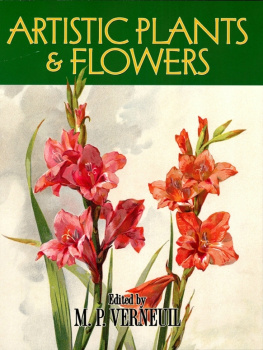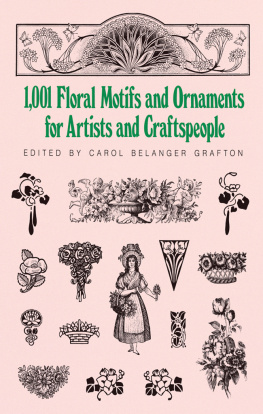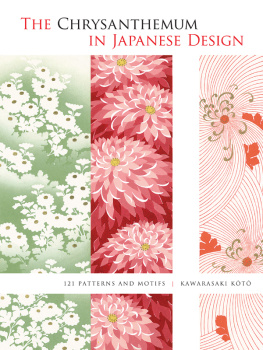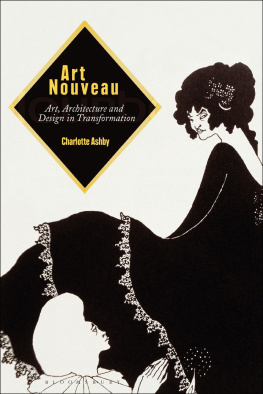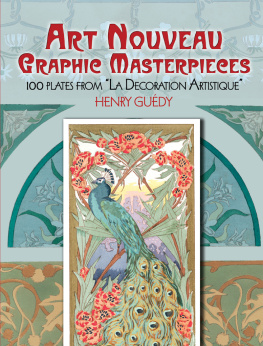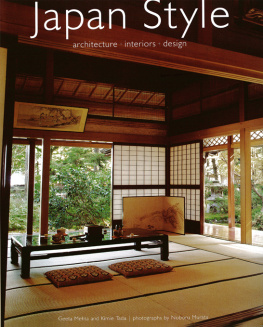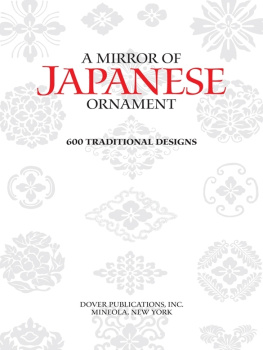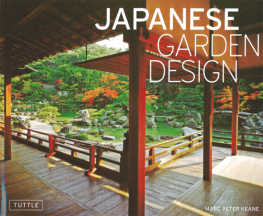



LE JAPON
ARTISTIQUE
Japanese Floral Pattern Design in the Art Nouveau Era
From the Collection of the Museum of Fine Arts, Boston
Introduction by Rachel Saunders

Introduction copyright 2010 by Rachel Saunders.
All rights reserved. No part of this book may be reproduced
in any form without written permission from the publisher.
Library of Congress Cataloging-in-Publication Data available.
ISBN: 978-1-4521-0560-4
Designed by Andrew Schapiro
Chronicle Books LLC
680 Second Street
San Francisco, CA 94107
www.chroniclebooks.com
Contents
INTRODUCTION
New Art for Old
Art Nouveau and Early Twentieth Century Japanese Design Books
by Nakamura Hch
by Sakai Hitsu
by Kamisaka Sekka
by Furuya Krin
LEONARD A. LAUDER COLLECTION
OF JAPANESE POSTCARDS
NEW ART FOR OLD
Art Nouveau and Early Twentieth Century Japanese Design Books
JAPAN , like Europe, has a long history of using design pattern books. Prior to the generalized spread of woodblock printing technology, manuscript compilations of patterns for use in textiles or model books for carpenters, for example, were carefully recorded, guarded, and transmitted within specialist artisan family lineages. In the mid-seventeenth century, Japan experienced a publishing boom that resulted in a veritable explosion, first in the production of woodblock printed books, followed from the mid-1760s on by full-color single-sheet prints of beauties and actors. These prints were the ukiyo-e or pictures of the floating world that were later to capture the imaginations of painters such as Monet and van Gogh half a world away in Europe.
The segregated licensed pleasure quarters of the capital, in which the floating world was both geographically and psychologically located, were places of escape from the strictly ordered Neo -Confucian society of early modern Japan. Real-world concerns and identities were to be left at the gates, and their essence was very much to be taken in the moment. In such places where high-class courtesans and entertainers enjoyed what we would think of today as celebrity status, fashion was of great importance. In 1666, relatively early in the book boom, we find a publisher taking a gamble on that fascination for fashion and publishing the first printed kimono pattern book (of which only one copy of the first printing is now known to exist, signals a significant change in the concept of the design book. Kimono pattern books such as this were not simply published in multiple copies so that they could be used by customers to select designs for their kimonos. They were produced much as magazines are today, for consumption and for pleasure. Some, like this book, included literary puzzles and puns hidden in the patterns, requiring readers to be visually as well as verbally literate to catch the full appeal of the urbane designs.

FIGURE 1
Kimono pattern books were followed by other kinds of printed design books. The painter Ooka Shunboku (16801763), known for his multivolume anthologies of canonical paintings, produced a beautiful book of architectural designs entitled Ranma zushiki [Designs for Decorative Transoms] in 1734 (). Katsushika Hokusai (17601849), one of the most familiar of all Japanese artists in the West, also produced exquisite books of designs for ornamental hair combs and smoking pipes. Kimono fashions, of course, changed with the times, and by the early nineteenth century, when smaller all-over patterns were favored, it was no longer really necessary from a practical point of view to render a full-body image of a kimono to understand how a kimono would look. But the pattern books continued to be published well into the nineteenth century, as older books containing styles of the past were reprinted, signaling an established market for the appreciation of pattern books as a genre.

FIGURE 2.1
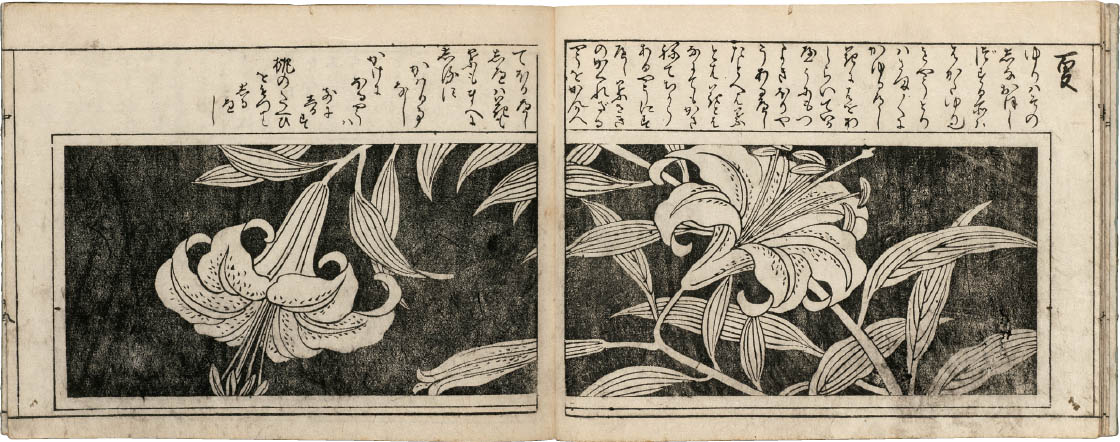
FIGURE 2.2
Beginning in the last decade of the nineteenth century, and especially in the years immediately following 1900, design books of a slightly different kind began to be published by the Kyoto publisher Unsd. Despite the availability of less labor-intensive means of reproduction by this time, Unsd produced its books in the traditional way, commissioning carvers to produce woodblocks, which were then inked and printed by hand. The resulting books are outstanding examples of fine printing, and the publisher continues to preserve the technical and design excellence rooted in traditional Japanese woodblock printing in its publications today. A number of the early twentieth century design books were printed with multiple design swatches of repeatable patterns in smaller formats with practical reference for designers in mind. Others, though, are examples of virtuoso design clearly produced for more general consumption. The images reproduced here from two such books Chigusa [A Thousand Grasses], which was first published 18991900, designed by Kamisaka Sekka (18661942); and Shasei ska moy [Patterns of Flowers and Grasses from Life], 1907, designed by Furuya Krin (18751910)belong to the latter category. Both books feature bold designs based on plants and flowers that traverse space on the page in contrasting yet equally considered ways.
On first examination, the use of conspicuously considered color planes and sinuous line are highly suggestive ofthe decorative Art Nouveau style, most actively practiced in Europe in the short period between about 1895 and 1905. Certainly there are superficial similarities, but these are counterbalanced by the linearity of the asymmetrical background planes that cut through the graceful curves of the flower forms, the drama of the distinctive color schemes, even the selection of plants. But just how Art Nouveau are these creations?
The Art Nouveau style is characterized by organic designs based overwhelmingly on plants and flowers, which are patternized often through the flattening of forms into color planes defined by the use of strong outline, and its hallmark whiplash curved lines. In its original conception, the emphasis was on the creation of entire decorative schemes and the style was applied to the decorative arts and architecture, bringing art into the design of daily life in unified artistic environments. Strongly influenced by and, in turn, nurtured in the work of artists and architects including Alphonse Mucha (18601939), Eugne Grasset (18411917), Victor Horta (18611947), Louis Comfort Tiffany (18481933), and Emile Gall (18461904), the style was propelled by the Parisian art dealer Siegfried Bing from 1895, when he opened his gallery, LArt Nouveau, at 22 Rue de Provence, and reached its zenith at the 1900 Paris Exposition Universelle.


